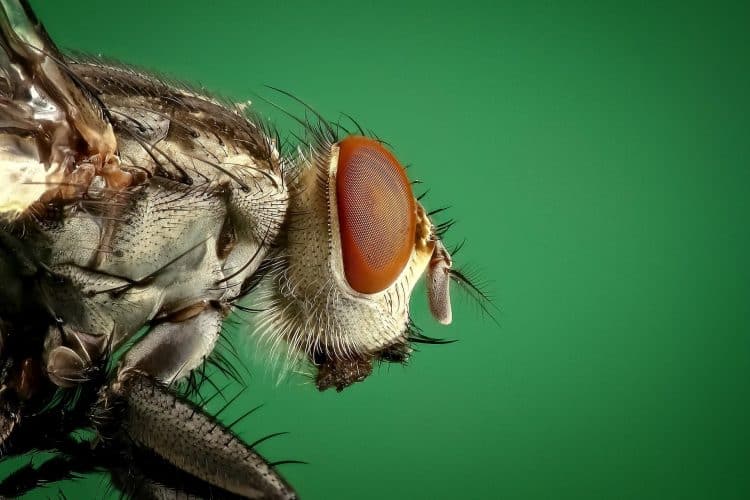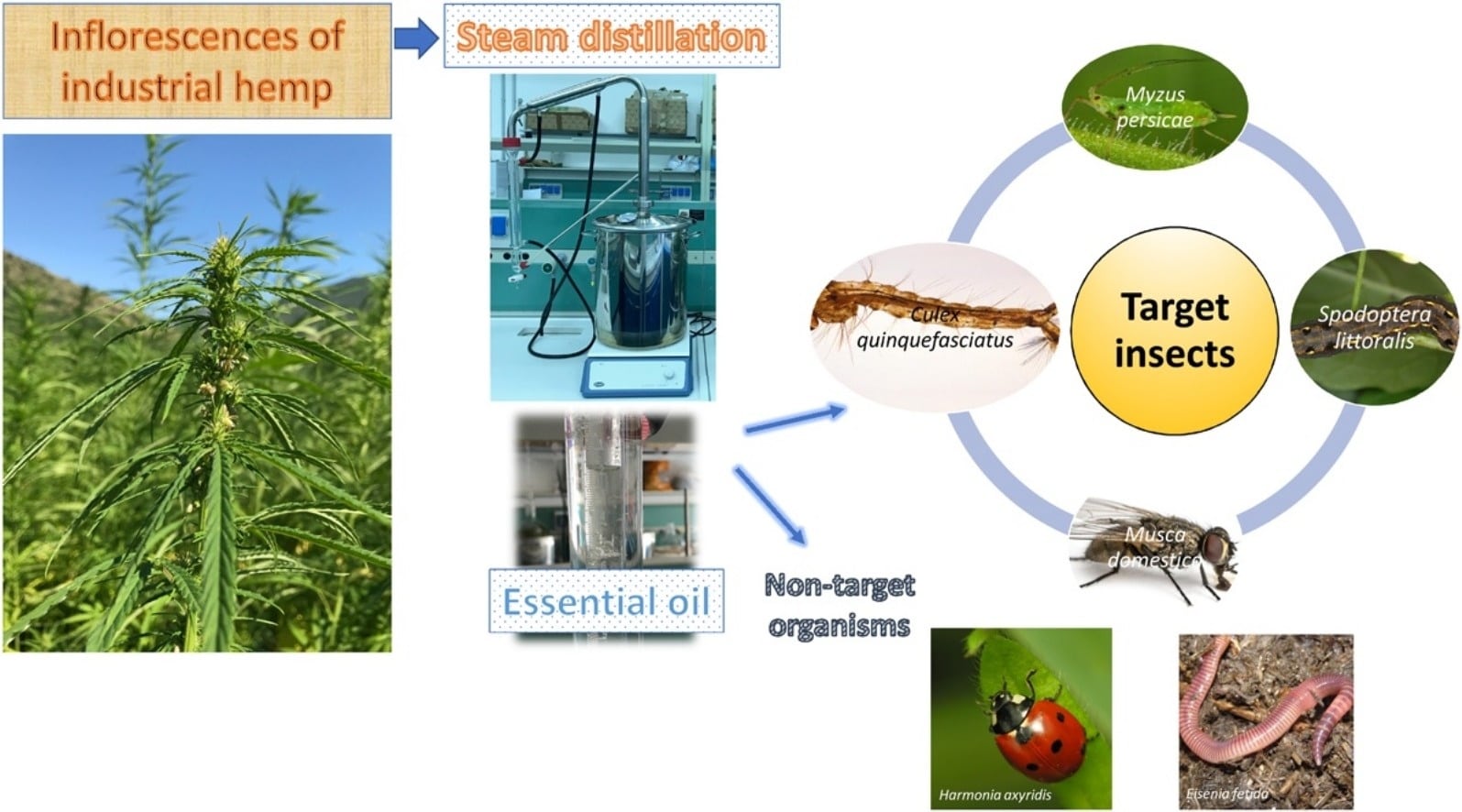Isolated terpenes have shown promise as natural insecticides. Of course, many believe that in terms of therapeutic benefits, the entire cannabis plant is superior to isolated molecules. Whole-plant cannabis/hemp essential oil for integrated pest management is a relatively novel idea. Would it actually defend against the pests that wreak havoc on crops?
In 2018, a group of Italian researchers decided to find out. [1]
They noted that “hemp by-products as a source of botanical insecticides is a matter of interest for farmers.” Specifically, the inflorescences of industrial hemp that would otherwise end up as waste are rich in trichomes that act as natural plant defenders. Such by-products converted into insecticide would represent an organic, sustainable pest management solution.
The researchers gathered hemp inflorescences (from Felina 32 used for seed oil) in central Italy. They applied steam distillation to create 0.1% essential oil and used gas chromatography-mass spectrometry to identify 47 compounds, mostly monoterpenes (54%) and sesquiterpenes (44.2%). Cannabidiol (CBD) made up only 0.1% of the oil. The researchers then coupled gas chromatography with flame ionization detection and quantified absolute values for the marker compounds:
- (E)-caryophyllene (45.4%)
- Myrcene (25.0%)
- α-pinene (17.9%)
- Terpinolene (10.1%)
- Cannabidiol (<0.1%)
Wisely, the researchers clarified that “the chemical composition of the essential oil from hemp inflorescences is affected by several factors such as cultivar, harvesting period and extraction and processing of the raw material.”
Regardless, they tested this essential oil on an array of harmful and beneficial insect populations. The metrics for determining lethality were LD50 (lethal dose 50%) and LD90 (lethal dose 90%), the absolute dose required to kill the median and 90th percentile of the population’s individuals, respectively. Researchers also used LC (lethal concentration) 50 and 90, which refers to the concentration in air or water capable of achieving those mortality rates.
The oil devastated Myzus persicae, a species of aphid that feeds on over 400 species of plant (in this case, potted cabbage plants) with an LC50(90) of 3.5(6.2) milliters per liter. It also wreaked destruction on Musca domestica (the housefly) with an LD50(90) of 43.3(213.5) micrograms per adult.
[Graphic 2|Benelli, G, et al. (2018)]
Spodoptera littoralis (cotton leafworm) larvae, which chow down on over 80 plants, suffered less; the researchers determined that 152.3 micrograms were required to achieve LD50. Culex quinquefasciatus, the southern house mosquito, kept right on buzzing through most of the experiment with high resistance: the LC50 was 252.5 milliliters per liter on larvae and over 500 micrograms per square centimeter on adults (via a tarsal contact test).
Importantly, the hemp oil did not harm tested garden warriors, namely the multicolored Asian lady beetle (Harmonia axyridis) and Eisenia fetida earthworm. On the other hand, the synthetic insecticide control, α-cypermethrin, did not spare our friends an untimely death.
The authors discussed the potential mechanism of action of each major terpene constituent. [1] The next questions are whether other hemp chemovars and terpene combinations would yield similar results, and how cannabis byproducts could be standardized into organic pest management programs.
Reference
- Benelli, G, et al. “The Essential Oil from Industrial Hemp (Cannabis sativa L.) By-Products as an Effective Tool for Insect Pest Management in Organic Crops.” Industrial Crops & Products, vol.122, no.10, 2018, pp. 308-315. Journal Impact Factor = 4.419, Times Cited = 30












